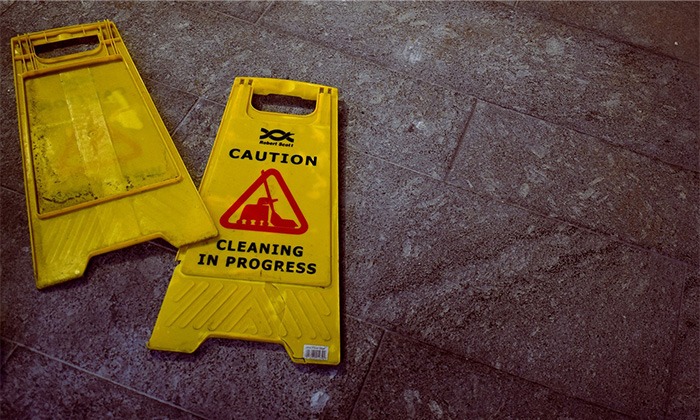Proving Liability in Slip and Fall Cases
To establish liability in a slip and fall case, you must demonstrate the following elements:
Duty of Care
The property owner or occupier had a legal duty to maintain the premises in a reasonably safe condition for visitors. This duty of care extends to different types of visitors, such as invitees (customers), licensees (social guests), and sometimes even trespassers.
Breach of Duty
You must show that the property owner or occupier failed to uphold their duty of care. This could involve showing that they were aware of a hazardous condition or should have been aware of it through reasonable inspections.
Causation
You need to establish a direct link between the property owner’s breach of duty and your injuries. In other words, you must demonstrate that the hazardous condition directly led to your slip and fall accident.
Notice
Depending on the circumstances, you may need to prove that the property owner had prior notice of the hazardous condition. This can be actual notice (they were informed of the hazard) or constructive notice (the hazard existed for a sufficient period that they should have known about it).
Types of Evidence a Florida Slip and Fall Injury Attorney will Collect to Establish Negligence
Establishing negligence is necessary in these cases, and the evidence collected plays a vital role. Here are the types of evidence a Florida slip and fall injury attorney may collect:
- Incident Reports: Your attorney will obtain any incident reports related to your slip and fall from the property owner, manager, or employees. These reports may contain crucial details about the accident, including when and where it occurred, the conditions at the time, and any immediate actions taken.
- Photographs and Videos: Visual evidence is powerful in slip and fall cases. Your attorney will collect photographs and videos of the accident scene, showing hazardous conditions such as wet floors, broken steps, uneven surfaces, or inadequate lighting. These visuals can help establish liability.
- Witness Statements: Statements from witnesses who saw the accident happen or can attest to the hazardous conditions can be invaluable. Your attorney will interview these witnesses and gather their statements to corroborate your account of the incident.
- Maintenance Records: Property owners have a duty to maintain their premises in a safe condition. Your attorney will request maintenance records to determine whether regular inspections and repairs were conducted. If there is evidence of neglect or failure to address known hazards, it can strengthen your case.
- Surveillance Footage: In some cases, security cameras on the property may have captured the accident. Your attorney will request and review any available surveillance footage to provide a clear picture of what happened.
- Medical Records: Your medical records are essential to establishing the extent of your injuries and the treatment you received. Your attorney will collect medical records, bills, and reports from healthcare providers to demonstrate the link between the slip and fall accident and your injuries.
- Expert Testimony: Your attorney may consult with experts, such as engineers or safety specialists, who can analyze the accident scene, hazardous conditions, and maintenance practices to provide professional opinions about negligence.
- Property Inspection Reports: If applicable, your attorney may obtain inspection reports from government agencies or third-party inspectors that detail any violations or safety concerns related to the property where the accident occurred.
- Past Complaints and Incidents: Your attorney will investigate whether there were any prior complaints or incidents related to the hazardous conditions on the property. This information can demonstrate that the property owner had prior knowledge of the dangers.
- Footwear Analysis: In some cases, an analysis of your footwear may be conducted to determine if it played a role in the accident, such as whether it had appropriate traction for the surface.
- Weather Conditions: If weather played a role in your slip and fall, your attorney may collect weather reports or data to establish the weather conditions at the time of the accident.
- Property Maintenance Policies: Your attorney will inquire about the property owner’s maintenance policies and procedures, including cleaning schedules, safety protocols, and training records for employees.
Choose a Proven and Capable Florida Slip and Fall Injury Lawyer
If you or a loved one have suffered injuries in a slip and fall accident in Florida, don’t wait to seek justice. Contact Robert W. Rust, Esq., a seasoned slip and fall injury attorney at Rust Injury Law in Miami, Florida. With a wealth of experience in personal injury cases, Robert W. Rust will meticulously collect the necessary evidence, build a strong case to establish negligence, and fight relentlessly for your right to maximum compensation. Call us at 305-200-8856 or contact us online to schedule your free consultation.
